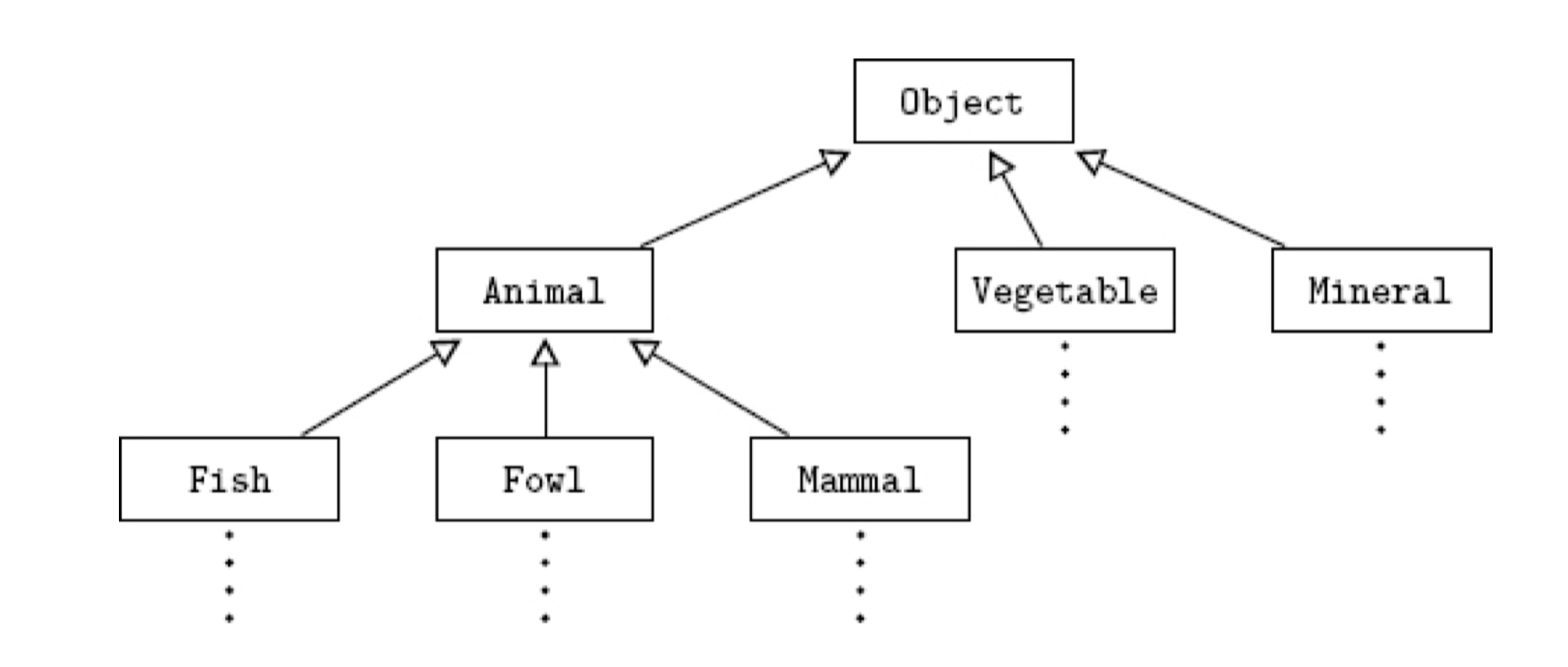[course07] 01 Object class
[course07] 01 Object class
The universal superclass
Object is a direct or indirect superclass of every other class.

toString() method
examples:
Note
The + sign is a concatenation operator for strings
Array objects are unusual in that they do not have a toString method. To print the elements of an array, the array must be traversed and each element must explicitly be printed.
equal() method
Do not use == to test objects for equality. Use the equals method.
Note
The default implementation of equals is equivalent to the == relation for objects: In the Date example above, the test if (d1 == d2) returns trXe; the test if (d1 == d3) returns false.
The operators <, >, and so on are not used for objects (reference types) in Java. To compare objects, you must use either the equals method or define a compareTo method for the class.
Last updated
Was this helpful?